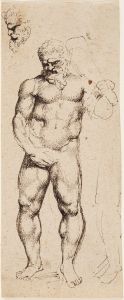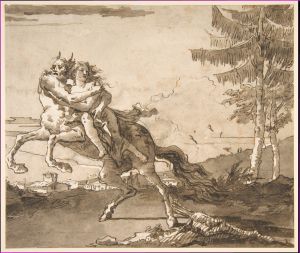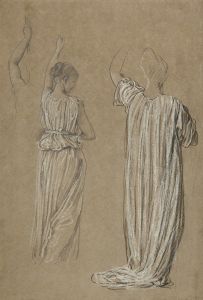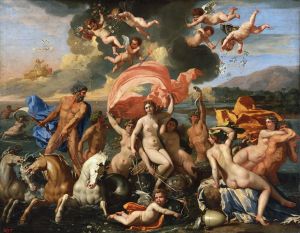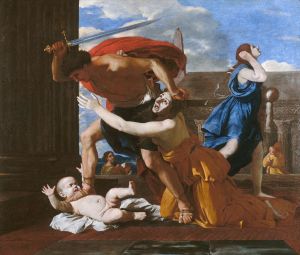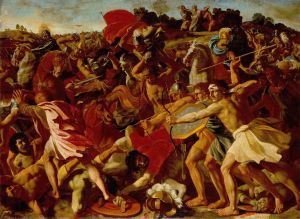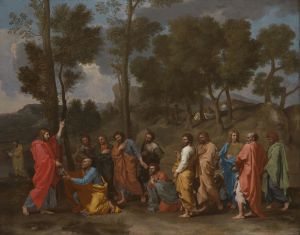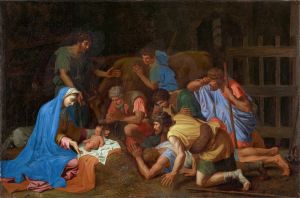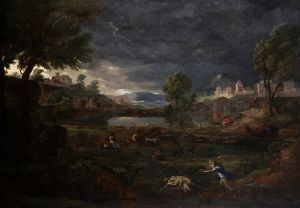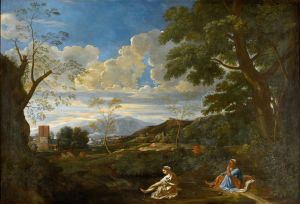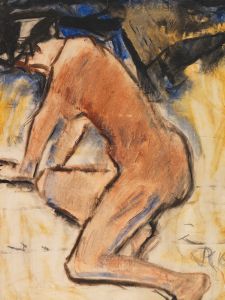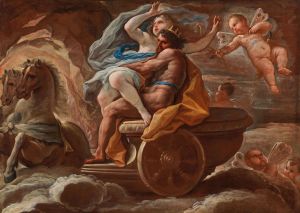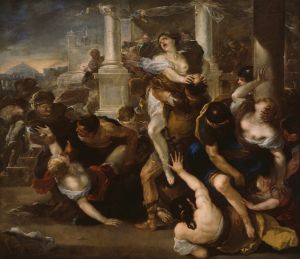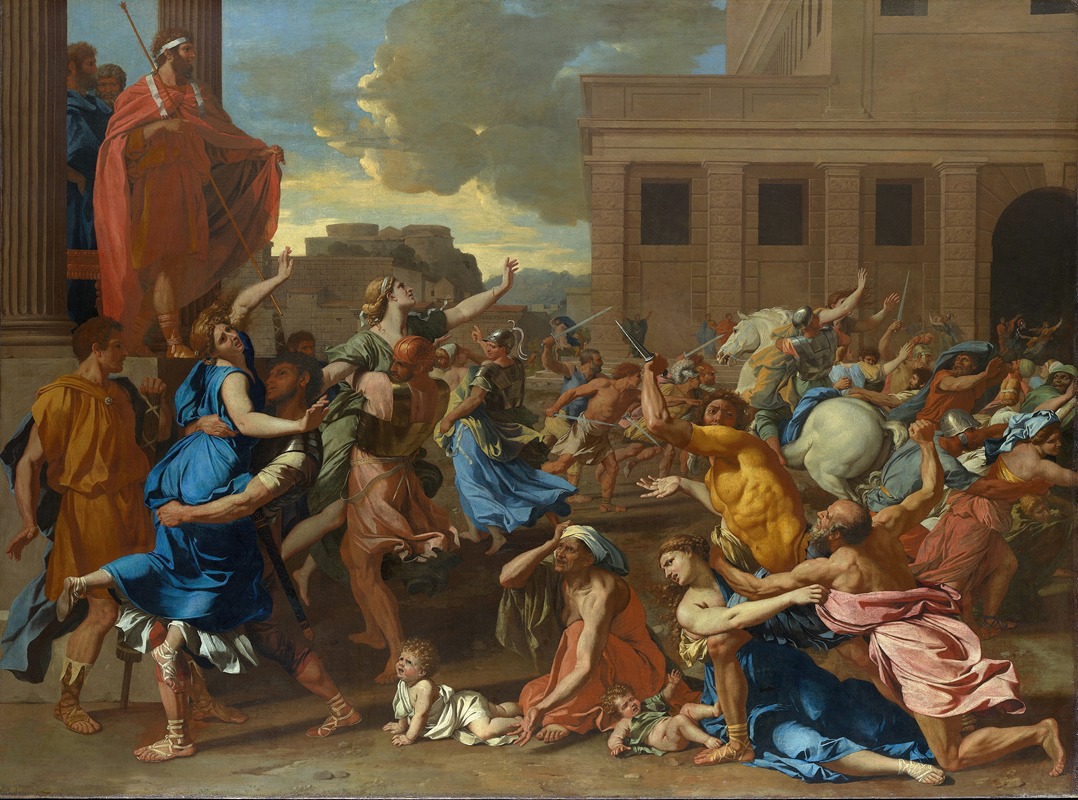
The Abduction of The Sabine Women
A hand-painted replica of Nicolas Poussin’s masterpiece The Abduction of The Sabine Women, meticulously crafted by professional artists to capture the true essence of the original. Each piece is created with museum-quality canvas and rare mineral pigments, carefully painted by experienced artists with delicate brushstrokes and rich, layered colors to perfectly recreate the texture of the original artwork. Unlike machine-printed reproductions, this hand-painted version brings the painting to life, infused with the artist’s emotions and skill in every stroke. Whether for personal collection or home decoration, it instantly elevates the artistic atmosphere of any space.
"The Abduction of the Sabine Women" is a renowned painting by the French artist Nicolas Poussin, created in the early 17th century. Poussin, a leading figure of the classical French Baroque style, is celebrated for his historical and religious paintings, which often draw upon classical antiquity for inspiration. This particular work is a vivid depiction of a legendary episode from the early history of Rome, known as the "Rape of the Sabine Women."
The painting illustrates a dramatic moment from Roman mythology. According to the legend, the founder of Rome, Romulus, and his male followers were in need of women to ensure the future growth of their nascent city. They devised a plan to abduct women from the neighboring Sabine tribe during a festival. The term "rape" in this context is derived from the Latin word "raptio," meaning "abduction" rather than its modern connotation of sexual violence. Poussin's work captures the chaos and emotional intensity of this event.
Poussin's composition is characterized by its dynamic movement and the careful arrangement of figures, which is typical of his style. The painting is a masterful example of Poussin's ability to convey complex narratives through the use of classical forms and balanced compositions. The figures are depicted in various poses, expressing a range of emotions from fear and desperation to determination and aggression. The artist's use of color and light enhances the drama of the scene, drawing the viewer's eye across the canvas and highlighting key elements of the story.
The painting is notable for its attention to detail and the classical influences evident in the depiction of the figures and architecture. Poussin was deeply influenced by his studies of ancient Roman art and architecture, which is reflected in the classical attire of the figures and the Roman setting. The work exemplifies Poussin's dedication to the principles of classical art, including harmony, proportion, and clarity.
"The Abduction of the Sabine Women" is housed in the Louvre Museum in Paris, where it continues to be a significant attraction for art enthusiasts and scholars alike. The painting is often studied for its artistic merit as well as its historical and cultural significance. Poussin's interpretation of the Sabine women's abduction has been influential in the art world, inspiring numerous other artists to explore similar themes in their work.
Overall, Nicolas Poussin's "The Abduction of the Sabine Women" stands as a testament to his skill as a painter and his ability to bring historical and mythological narratives to life through art. The painting remains an important piece in the study of Baroque art and continues to be appreciated for its technical brilliance and emotional depth.





